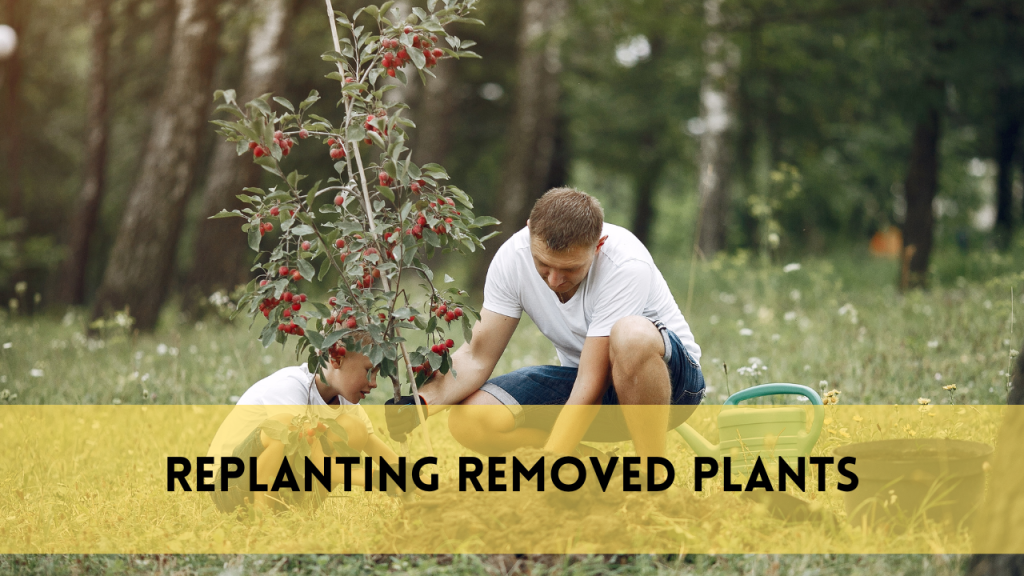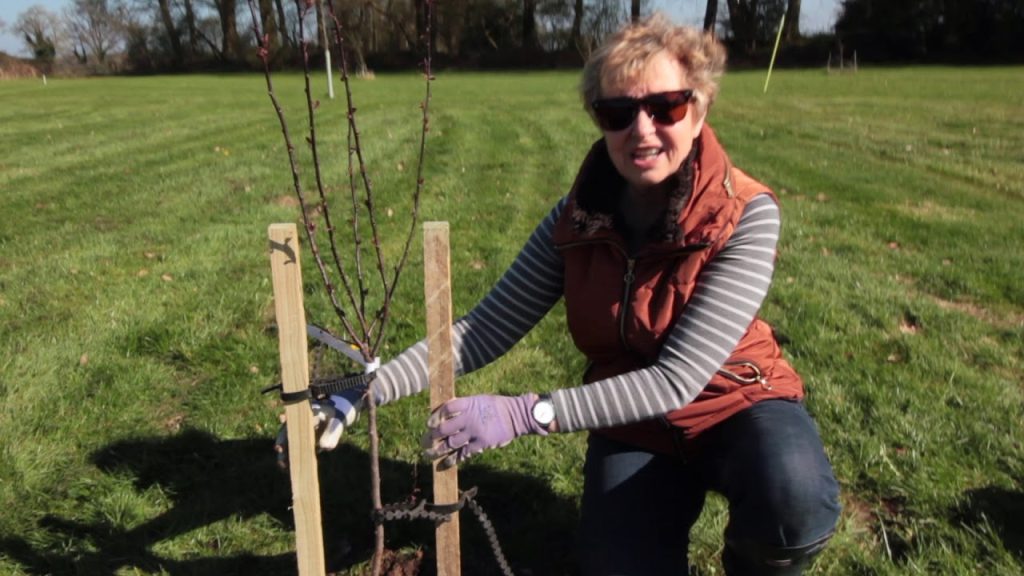Bees, typically seen as little yet powerful insects, perform an important part in our ecology. They are vital pollinators, aiding the reproduction of several plants and guaranteeing the production of fruits, vegetables, and nuts, all of which contribute significantly to our food. Bees contribute to the variety and health of our ecosystem in addition to their economic importance. Bees pollinate nearly 75% of the world’s major food crops, making them critical to global agriculture and food security. Bees help to maintain ecosystem health by pollinating wildflowers and plants, which in turn sustain a wide range of animal species. Bees also generate honey, a useful natural sweetener, as well as beeswax, which has a variety of applications in cosmetics and candles. In this blog you will be able to learn about How to remove beehive from tree.
The Importance of Beehive Removal
While bees are unquestionably beneficial to our environment, their presence in particular areas, such as beehives connected to trees in your garden, might pose safety issues. Bee stings may be uncomfortable, and for those who are allergic to them, they can be fatal. Furthermore, if they detect a danger to their colony, bees may become hostile.
Concerns about safety: A beehive in a tree might be dangerous, particularly if it’s near your house, play areas, or heavily frequented places.
Bee stings may cause serious allergic responses in certain individuals, making it critical to treat bee hives near human activity areas.
Property harm: The weight of a beehive may harm a tree over time, causing it to deteriorate or possibly die.
The Importance of Preservation and Safety
When dealing with a beehive in a tree, it’s critical to strike a balance between your safety and the preservation of these important pollinators. Beehive removal should be conducted with care, not just to protect oneself, but also to minimize damage to bees and their important function in the environment.
Precautions: To minimize bee stings and guarantee a smooth extraction operation, particular precautions must be taken before removing a beehive from a tree.
Ethical Considerations: Responsible beehive removal takes into account the bees’ well-being. Relocation, rather than destruction, should be chosen wherever practicable.
By the conclusion of this course, you’ll have the knowledge and equipment you need to securely and responsibly remove a beehive from a tree, protecting both yourself and these essential pollinators. Let’s take it one step at a time, beginning with locating the hive and planning for removal.
Beehive Identification
Before attempting to remove a beehive from a tree, it is critical to accurately identify the hive and understand the bees’ behavior. This understanding will assist you in efficiently planning your removal approach and ensuring the safety of both yourself and the bees.
Bee Hives and Their Varieties
- The honey bee (Apis mellifera)
Honey bees are often golden-yellow or brown in color, with different banding patterns. They are around 0.5 inches long and have a plump, fluffy look.
Honey bee colonies are often built in a sophisticated hexagonal layout composed of beeswax. They are often discovered in hollow trees, wall gaps, and man-made constructions.
Honey bees are typically non-aggressive and will only sting if they believe there is a direct danger to their colony. When their colony is disrupted, they are more inclined to swarm.
- Bombus spp. are bumblebees.
Bumblebees have a hairy look and are bigger and more robust than honey bees. They are available in a variety of colors, including black, yellow, and orange.
Bumblebee colonies are lower in size than honey bee colonies. They often construct their nests underground or in grassy areas.
Bumblebees are normally gentle and will not sting unless provoked. In comparison to honey bees, they are less protective of their nests.
- Bees that live alone
Solitary bees have a variety of appearances, although they are often smaller and less hairy than honey bees or bumblebees.
Hive Characteristics: Solitary bees, as the name implies, do not establish big colonies. Rather, each female constructs her own nest in holes, earth, or wood.
Solitary bees are often not aggressive, and their stings are uncommon since they lack a hive or colony to protect.
Indicators of a Beehive in a Tree
Identifying a beehive in a tree is the first step towards removing it. Here are some warning indicators to watch out for:
Increased Bee Activity: Keep a look out for an abnormally large number of bees hovering around a particular tree, particularly on warm, bright days.
Buzzing Sounds: The tree may emit a continuous buzzing or humming sound. This indicates the existence of a hive.
Visible entry: Search for a little hole or entry at the tree’s base or in a limb. Bees will enter and depart the hive via this aperture.
Wax and Propolis: You may see beeswax or propolis (a resinous material used by bees) near the hive entrance in certain circumstances.
Swarming: When bees are prepared to leave the hive or move, they may swarm around the tree. This is a brief yet notable occurrence.
You may continue with the preparations for securely removing the beehive from the tree after you’ve accurately located the hive and examined the bee activity and behavior. This entails obtaining the proper equipment and supplies as well as determining the best time to remove the item, which we’ll go over in depth in the next sections.
Beehive Removal Preparation
It is essential to make careful preparations before attempting to remove a beehive from a tree. Proper planning ensures your safety and the success of the removal operation while causing the least amount of damage to the bees and their hive. In this part, we’ll go through the essential stages for beehive removal.
First and foremost, safety gear and equipment are required.
Purchase a complete beekeeping costume, which includes a beekeeper’s jacket, veil, gloves and trousers. This clothing creates a physical barrier between you and the bees, which is essential for avoiding bee stings.
Beekeeping Gloves: To protect your hands and wrists, wear long-sleeved beekeeping gloves. To prevent bees from entering via gaps, make sure they fit tightly.
To protect your feet, wear closed-toe boots with thick socks. To prevent bees from creeping up your legs, tuck your trousers into your boots.
Wear proper safety glasses or goggles to protect your eyes from bee stings or debris.
A bee smoker is a gadget that produces cold smoke. It calms the bees and makes them less aggressive during removal. Make sure you have a working smoker and plenty of fuel, such as raw burlap or pine needles.
Considerations for Time and Weather
Choose the Right Season: When bee numbers are at their height, late spring or early summer is the optimum time to remove a beehive from a tree. Avoid removing bees during the winter or when it is too cold for them to be active.
Ideal Weather: Choose a day when the weather is moderate and dry. Because bees are more busy on sunny days, attempt to plan your removal during these times. Windy days might make bee eradication more difficult.
Time of Day: Bees are less busy in the early morning and late evening. Because many bees are still within the hive in the early morning, this is frequently considered the optimal time for evacuation.
Considerations Legal and Ethical
Check Local restrictions: Before attempting beehive removal, check with your local authorities or beekeeping organizations to see if there are any bee removal restrictions or permissions necessary. You may require permission or help from a licensed beekeeper in certain places.
Ethical Considerations: Whenever feasible, relocate the beehive rather than destroy it. Honey bee numbers are threatened, and protecting their colonies is critical for the ecosystem. Contact a local beekeeper or bee removal professional to transfer the hive securely.
By meticulously planning for beehive removal, you not only secure your own safety, but you also help to the appropriate handling of these important pollinators. In the next part, we’ll go through how to properly remove a beehive from a tree, guaranteeing a smooth and fast operation.
How to Remove a Beehive from a Tree in Steps
Taking a beehive out of a tree is a delicate and precise procedure that needs careful preparation and execution. This step-by-step tutorial will walk you through the procedure, guaranteeing your and the bees’ safety while properly transferring or disposing of the hive.
Examine the Situation
Examine Beehive Size and position: Before reaching the tree, determine the size and specific position of the hive on the tree. This information will assist you in determining the optimum method of removal.
Observe Bee Activity and Behaviour: Pay attention to the activity of the bees surrounding the hive. Are the bees frantic or peaceful? Understanding their behavior will assist you in developing your approach.
Gather the Required Tools and Materials
Beekeeping outfit: Wear a full beekeeping outfit, including a veil, gloves, jacket and trousers.
Bee Smoker: Prepare the bee smoker for use by filling it with fuel (such as untreated burlap or pine needles).
Prepare needed items for gentle hive removal, such as a hive tool, bee brush, and a bee vacuum (if available).
Select the Appropriate Time
Confirm that the weather conditions are favorable for bee eradication. Choose a warm, dry day with little wind, especially in the late morning or early afternoon.
Time of Day: Bee removal is best done in the early morning or late evening, when bees are less busy.
Come up to the Tree
Move gently and Calmly: Approach the tree gently and calmly. Bees may be agitated by sudden movements or loud sounds.
To Calm Bees, Use Smoke: Light the bee smoker and emit cool smoke. To quiet the bees, gently blow smoke over the hive entrance and surrounding area. Smoking excessively might stress the bees.
Remove the Beehive in a Safe Way
Detaching the Hive: Carefully remove the hive from the tree using the hive tool. To prevent unexpected movements, work gently. During this time, bees may leave the hive.
Place the removed hive in a suitable container, such as a wooden bee box or a secure cardboard box with ventilation holes. Seal the container to keep the bees out.
Get Rid of the Hive
Relocation vs. Destruction: Choose relocation over destruction wherever feasible. Contact a local beekeeper or bee removal professional to safely transfer the hive to a better site. If migration is not an option, check local legislation regarding hive disposal.
Clear the Area
Check the tree for any leftover bees or hive fragments before removing any residue. Gently remove bees off the tree using the bee brush. Collect and dispose of any wax or debris carefully.
Ensure Safety: Before departing, make sure the area is free of bees. Leave no equipment or things that might attract bees behind.
Avoid Future Infestations
Seal Natural Tree Cavities: If the tree has a natural cavity where the hive was found, consider sealing it to avoid future infestations. To prevent access, use suitable materials.
Regular Inspections: Inspect your property on a regular basis for evidence of new beehives to resolve any problems as soon as possible.
You may safely and responsibly remove a beehive from a tree by following these step-by-step guidelines, assuring the well-being of both you and these important pollinators. In the next part, we’ll discuss important safety precautions and typical removal blunders to avoid.
Safety Recommendations and Common Errors to Avoid
To protect the safety of everyone concerned, removing a beehive from a tree must be done carefully. This section offers vital safety guidelines to keep you safe and identifies typical errors to avoid throughout the removal procedure.
Safety Recommendations
1. Wear Proper Safety Equipment
Wear a full beekeeping outfit, including a veil, gloves, jacket and trousers, at all times. Make sure they fit tightly to keep bees out.
2. How to Effectively Use a Bee Smoker
Applying Smoke Properly: Use the bee smoker to release cold smoke that soothes the bees. Puff the smoke softly about the hive entrance and the surrounding region without smoking too much.
3. Approach Slowly and Calmly
Gentle Movements: Move gently and quietly towards the tree. Bees may be agitated by sudden movements or loud sounds.
4. Make a Plan for Your Escape
Prepare an Exit Strategy: Before you begin, plan an escape route in case the bees grow agitated or swarm.
5. Work with caution.
Gentle Hive Detachment: Carefully separate the hive using the hive tool. To avoid bees becoming defensive, avoid rapid or aggressive actions.
6. If at all possible, relocate.
choose Relocation: Whenever possible, choose relocation over destruction. To aid with relocation, contact local beekeepers or bee removal professionals.
B. Common Errors to Avoid
1. Bees are being disturbed.
Avoid aggressive behaviors such as hammering on the tree or making unexpected, loud sounds. This might agitate the bees and result in stings.
2. Inadequate Safety Equipment
Inadequate Protection: Never undertake beehive removal without proper protective gear. Check that your suit, gloves and veil are in excellent shape and fit appropriately.
3. Inadequate Smoke
Smoking Misuse or Overuse: Use the smoker sparingly. Underuse may not properly soothe the bees, while overuse may stress them.
4. Hastening the Process
Hasty Actions: Removing a beehive demands time and accuracy. Rushing through the procedure may result in mishaps or partial removal.
5. Failure to Check Local Regulations
Legal Compliance: Always verify local legislation before removing or disposing of bees. Noncompliance with local rules may result in fines or legal penalties.
6. Leaving Debris Behind
Incomplete Cleanup: To avoid attracting more bees, ensure that the tree and surrounding area are clean of bee remains, wax, or equipment following removal.
7. Not Having a Backup Plan
Prepare for unforeseen scenarios with emergency preparedness. In case of bee stings, have a first-aid kit on hand and know the location of the closest medical institution.
You may considerably lessen the hazards involved with beehive removal by following these safety measures and avoiding frequent blunders. Always keep safety as your number one concern throughout the procedure. In the following part, we’ll go through when it’s suitable to use professional bee removal services and how to choose the best person for the task.
Related Posts:
Can we Plant a Tree where Stump was Removed?
Recruiting Professionals
While DIY beehive removal may be effective in many circumstances, there are certain situations where professional bee removal services are safer and more practical. In this part, we’ll discuss when to seek professional assistance and how to find the best bee removal expert.
Conclusion
You’ve learned vital insights into the value of bee conservation, the necessity for responsible hive removal, and the required measures to guarantee a successful and safe removal process as you’ve read this advice on how to properly remove a beehive from a tree. Let us summarize the main points and conclude our debate. Thank you for your interest in careful beehive removal. By following these guidelines, you may help bees, the environment, and the sustainability of our world. We can continue to enjoy and profit from the remarkable work of these little but powerful pollinators while also guaranteeing our and their safety.
FAQs
What’s the safest way to remove a beehive from a tree?
The safest way to remove a beehive from a tree is to hire a professional beekeeper or pest control expert. They have the necessary equipment and expertise to handle bees safely and relocate them without harming the colony.
Can I remove a beehive from a tree by myself?
It is not recommended for individuals without experience to remove a beehive from a tree by themselves. Bees can become aggressive when their hive is disturbed, which can lead to stings and dangerous situations. It’s best to seek professional help.
Are there any non-lethal methods for beehive removal?
Yes, non-lethal methods involve relocating the beehive rather than exterminating the bees. Professional beekeepers can perform live removals, where they carefully extract the hive and transfer it to a safe location, preserving the colony.
What precautions should I take if I discover a beehive in my tree?
If you find a beehive in your tree, it’s important to keep a safe distance and avoid disturbing the bees. Do not attempt to remove it yourself. Notify a local beekeeper or pest control professional



